
 Data Structure
Data Structure Networking
Networking RDBMS
RDBMS Operating System
Operating System Java
Java MS Excel
MS Excel iOS
iOS HTML
HTML CSS
CSS Android
Android Python
Python C Programming
C Programming C++
C++ C#
C# MongoDB
MongoDB MySQL
MySQL Javascript
Javascript PHP
PHP
- Selected Reading
- UPSC IAS Exams Notes
- Developer's Best Practices
- Questions and Answers
- Effective Resume Writing
- HR Interview Questions
- Computer Glossary
- Who is Who
What is Facebook Workplace? Can it compete with SLACK and Microsoft’s TEAMS?
Great companies work on enormous connections. It is the collaboration between employees which keeps the work going, ideas get shared instantaneously, decisions are taken faster, the entire team is updated, and stays on the same page at all times. These connections eventually drive employees to strive harder and perform to the best of their ability. In this article, we discuss the various enterprise social media for communication and collaboration: Facebook Workplace, Slack and Microsoft’s Teams and how they stand against each other in times of tough competition.
Facebook Workplace
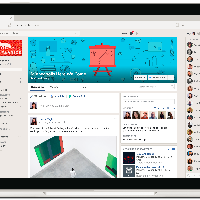
Business ideas are needed to turn into action. Goals and expectations are required to be met. Decisions must be shared quickly. Further, the information shared needs to be kept private. Live videos aid in communicating to all at one time, in real-time.
News feeds are visible to all, updating all employees about the happenings in the organization. Messaging, voice or video calling is possible instantaneously with any co-worker. Organizing/previewing of files is possible. Also, alerts can be set up using bots from here.
Business Collaboration
Facebook Workplace helps in business collaboration. It basic version was launched in October 2016 with the premium version launched recently.

It keeps the business and personal accounts separate. One needs an invite to start using it; however the premium version as is a paid version, can be signed up for (now). The platform of Facebook Workplace is quite similar to Facebook’s personal communication platform. Here too, like the personal/consumer one, an employee can add a photo, video or a file to get instantaneous responses. The news feed feature keeps one updated on what’s trending and other conversations happening in the organization. Moreover, two companies can collaborate with each other.
Exchanging Ideas
Added to this is the simple fact that it is extremely easy for workers to collaborate and exchange views on Facebook Workplace as there is no new learning here. It works the same way as on a personal profile hence becomes easier to understand and work with.
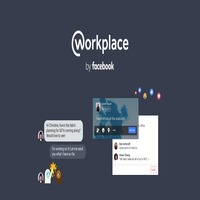
Facebook Workplace also integrates with cloud platforms such as Google Drive, Box, OneDrive and Salesforce. Conversations can be centered around a topic, team or project; and further can be open, closed or kept secret. Another feature in Workplace is Facebook Live, which suits home/home-office, and small-businesses is, broadcasting to all the team members of a company is possible. Workplace is a modern SaaS application and will involve little or investments in training by the buying organization. It also provides features similar to Slack for file sharing, live video, team channels etc.
Free version
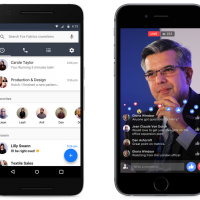
The free version of Facebook Workplace is open for small businesses, known as Workplace Standard. This may not have all the administrative and analytical tools as the premium version but will be great for emerging businesses or those in emerging markets to interact, message for cloud-based communications and try the free product while subsequently moving to the premium version. Premium subscriptions are free till September 30, 2017. However, according to an article in forbes.com, Facebook’s Workplace total market is expected to be $3.4 billion per year in the U.S.
Closest Competitors
Facebook Workplace faces tough competition with Slack, Microsoft’s Teams, Cisco Spark, Flowdock, Jive, and Salesforce’s Chatter. There’s also Google’s G Suite that’s catering to the same audience.
Slack

This is currently the leader for communication due to its integration for over 600 applications (Google Drive, Box File, Dropbox, GitHub or MailChimp) in categories such as space management, analytics and payment processors, making it more practical for group communication. It has a channels option where each channel could be categorized as a project. There is a free version after which one can upgrade to standard ($8/month) and plus ($15/month). It is more customized towards small/medium sized teams, startups and creative agencies and has a wide user base currently.
Facebook Workplace
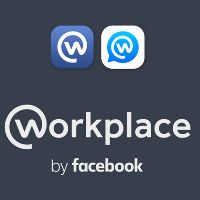
This is the only tool which allows live streaming of events. There is no overlap between professional and personal accounts. The free version can be tried for three months while then upgrading to the premium version for $3 a month for first 1000 users, $2 for the next 9000 and $1 for the rest.
Workplace is more suited towards a medium/vast range of teams that includes factories and retail. The service is free for non-profit organizations and educational institutions.
Microsoft Teams
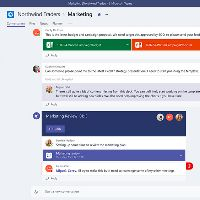
Unlike Slack, this tool does not provide features like stickers and custom memes for specific segments of the platform. Further, users who are already a part of the Office 365 ecosystem, have the access to Excel and Skype as it integrates through Teams. It also has a polling feature tool to let one know the team members’ reaction to a particular aspect.
Microsoft’s Teams works well for GIFs and memes. Microsoft’s Teams will be available this year with business plans ranging from $5-$8.25/month or enterprise plans ranging from $12-$35/month.
Google G Suite
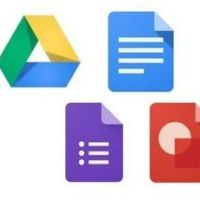
Another option called Google G Suite is also available for $5/month with no free versions. There are also other applications such as Basecamp, Trello and Skype which provide an environment for collaboration and communication between users/team members. This suite integrates many helpful applications of Google products, such as Gmail, Docs, Drive and Calendar, that are targeted towards business houses. Currently it’s priced in 33 categories- the $5 Basic Plan (home/office), the $10 Business Plan (small business), and the $25 Enterprise Plan (for corporates).
Conclusion
However, Facebook Workplace is uncomplicated and fascinating. It works on a similar platform which is already used by almost 2 billion people, and is offered at an affordable (low) price. It’s hard to envisage how Facebook Workplace could lose to its competitors; but there are times when, after developing the initial contact, the usage begins to decline. Therefore, Facebook initially needs to nurture its ecosystem.
The world is a lot less about whiteboards and walled rooms; and is more about chat applications, emails, instant messaging and video calling. Consequently, the decision to choose the chat application depends on the organization size, work culture, team demands, storage needs, and the integrated applications required.

